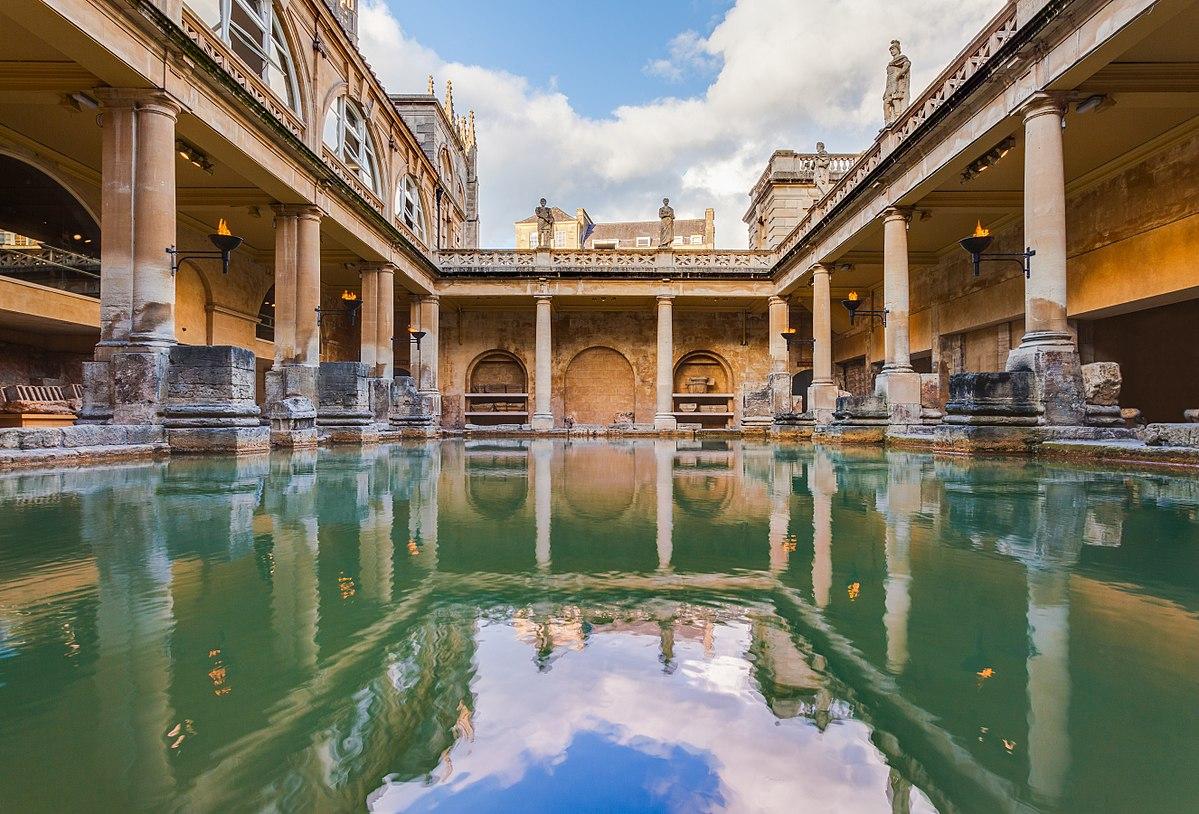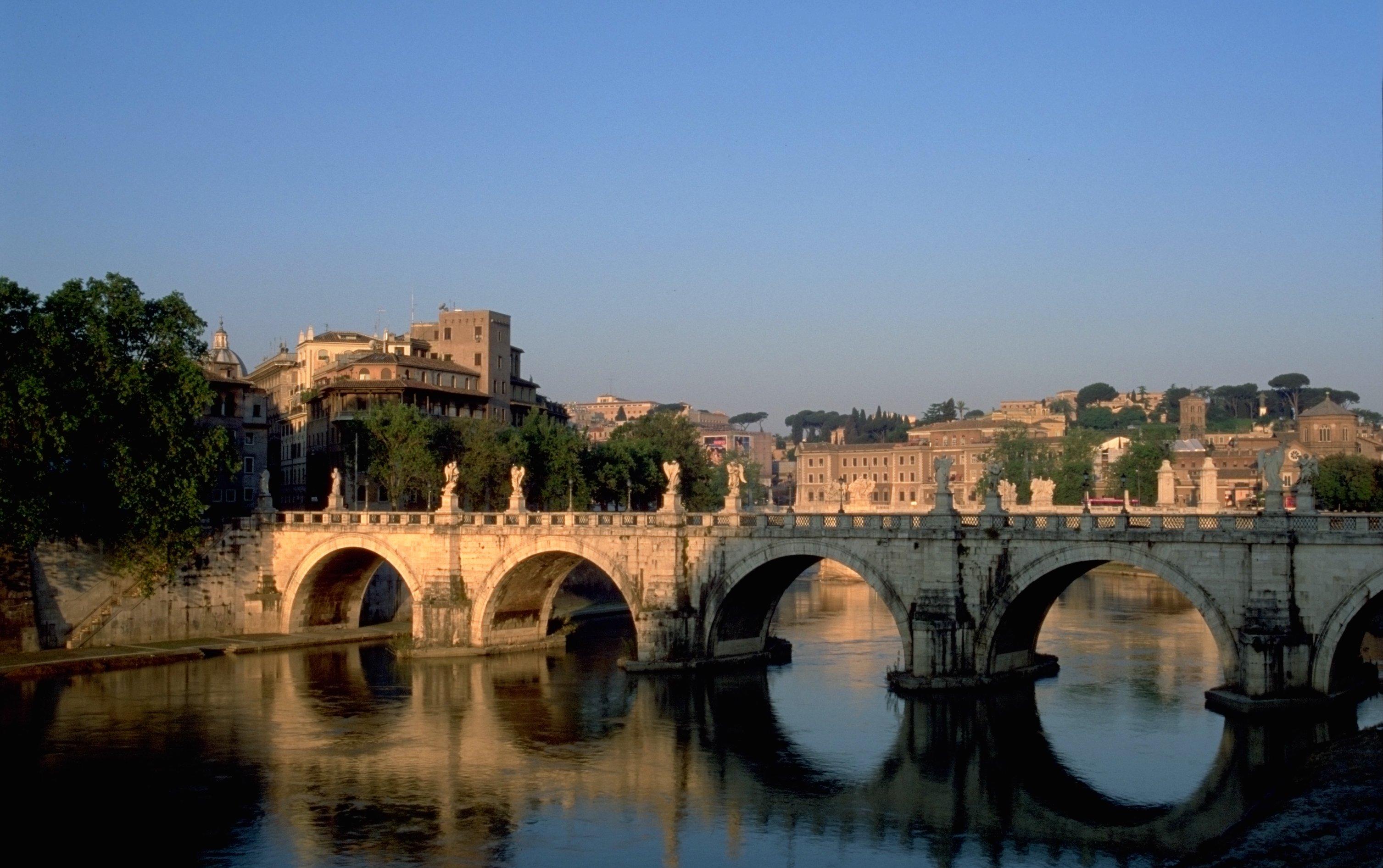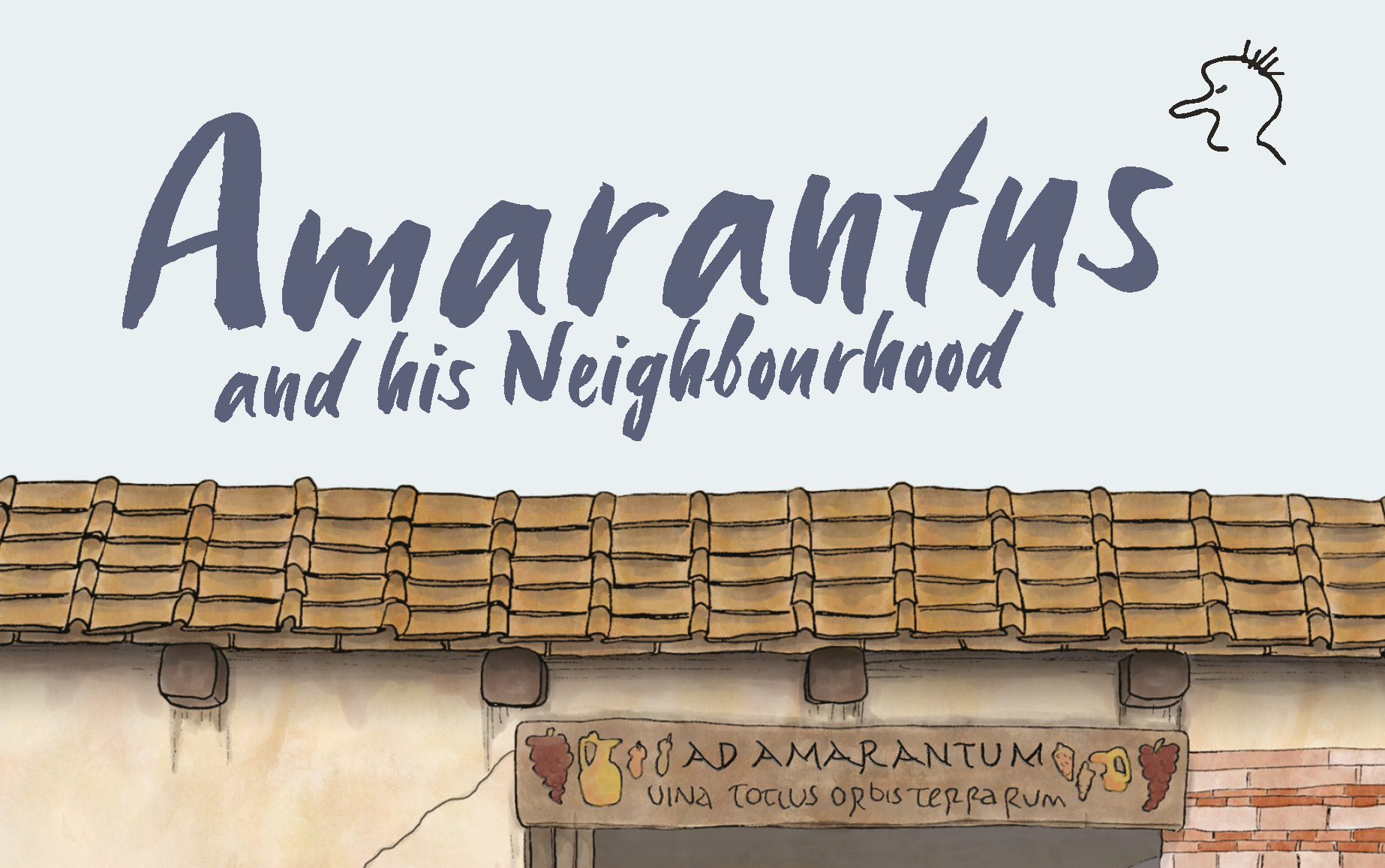Whether you are planning a school trip or exploring remotely from your Latin classroom, there are plenty of resources available to help you teach Roman Britain. In our first Hints and Tips post, Alexander Carroll shares a few of his favourites.

Submitted by Anonymous on Wed, 21/07/2021 - 13:06
A view of the Great Bath of Aquae Sulis, part of the major Roman bathing complex in Bath in the UK.
For those of us who live in the UK, evidence of the Roman world is right on our doorstep. This evidence reminds us that Britain was once a small province of a much larger empire, one that stretched from the banks of the Nile in Egypt to Hadrian’s Wall in Northern England. That Roman sites survive across such vast swathes of the modern world challenge us to ask a variety of questions, particularly as we move to Roman Britain with Quintus in Book II of the CLC. What traces did the Romans leave in Britain, and how did the native Britons respond?
There are myriad resources available online to help us pose these questions in our Latin and Classical Civilisation classrooms. New archaeological evidence surfaces in Britain all the time and often makes the national news. Recent examples include the discovery of the oldest written records surviving in the UK and challenging new evidence for the nature of slavery in the Roman provinces. Archaeology is constantly changing, a reminder to ourselves and our students that our knowledge of the ancient world can never be static. Engaging with this ever-changing record helps students realise how vital and interdisciplinary the study of Latin and the history of the ancient world can be.
***
Places to Visit
When heritage sites across the UK are open, they bring the world of the Romans to life for our students in a way that few other learning experiences can. Depending upon local accessibility, these are available for school trips at most times of the year. Here are some I think are particularly worth visiting.
Please check the websites of the sites listed below as booking may be required and some locations might be closed during the pandemic.
- Fishbourne Palace (CLC II, Stage 16)
Fishbourne palace offers a learning programme and resources. You must book your visit. - Bignor Villa (CLC II, Stages 13-16 and CLC III Stage 28)
Bignor Villa offers a learning programme and resources. You must book your visit. - Verulamium (St. Albans) and Grosvenor Museum (Chester). (Useful for CLC III Stages 24-28 and the Roman Army). You must book your visit.
- Museum of London, Roman Amphitheater and Temple of Mithras. (Useful for CLC I Stage 8, CLC II and CLC IV Stages 32-33). You must book your visit.
- English Heritage Interactive Map (Hadrian’s Wall, Wroxeter, Lullingstone Villa, Richborough, Portchester et al; useful for CLC II Stage 13, III Stages 24-28, IV Stages 32-33 and V Stages 35 and 37). Bookings can be made directly through English Heritage.
***
Online resources
There is nothing like seeing Roman artefacts in situ. How can we make the teaching of Roman Britain accessible to all students, those without easy access to the physical sites or without any Classics teaching provision?
There are some superlative resources online for bringing Roman Britain and Books I-V of the CLC to life. Below are some examples that I have found particularly helpful for engaging my students.
***
Virtual Visits
- Google Earth
Try following the Roman roads to Fishbourne on Google Earth as an introduction to Book II or in the direction of the Roman baths for the stories in Aquae Sulis. Bath, Rome and Pompeii can be displayed in 3D too: take a look at the Forum in Rome in 3D here. - Bing Maps
Some students will walk the routes of Roman roads on their Duke of Edinburgh – use Bing maps which has all the OS maps (1:50 and 1:25) to explore your local area for labelled Roman features (choose the O.S. option from the dropdown box in the top right). - Online resources of historical sites: Roman Baths
The Roman Baths have an excellent website. I ‘walk’ my class around remains of the bath and encourage them to consider how it changes their view of the stories in Book III: the space, it turns out, is much smaller and more claustrophobic than my students anticipated. - The Rural Settlement of Roman Britain: an online resource
An interactive map that helps students visualise the scope of archaeological sites that survive in Britain. Narrow your search to plot Roman burials, artefact finds or evidence of farming and mining on a map of modern Britain. - Omnes Viae: Roman Routeplanner and ORBIS
Omnes Viae is an interactive reconstruction of a Medieval map of the Roman world, believed to have been made from a copy of a third century CE original. With the online version you can try your hand at Roman routeplanning. Equally good is Orbis, The Stanford Geospatial Network Model of the Roman World, which reconstructs the time and financial expense associated with travel c. 200 CE. These sites are excellent ways of introducing your students to the complexities of travel in antiquity. Quintus's trip to Alexandria, it turns out, could have taken him from Athens to Egypt via Jerusalem.
***
Other resources
Time Team
These are available on Channel 4 and Clickview. Some prior planning is helpful to avoid any fuzzy quality or unfortunate jokes. Some episodes are particularly good for use alongside the teaching of Roman Britain in Stages 13-16.
Useful episodes include:
- S8-E3 The Celtic Spring
- S14-E4 Druids’ Last Stand
- E240 Boudica’s Lost Tribe
- 20 Years of Time Team
These episodes encourage the historical skills which are central to the teaching of the Latin language. In class, you might discuss what conclusions are reached in the episodes of Time Team and why. Pause the video and ask students where they would dig if they were on the show. You can go further: does any of this research clash with the details in the CLC? Where is there disagreement in sources? How might you investigate which is correct?
***
Additional Resources and Bibliography
Books
- Charlotte Higgins, Under Another Sky: Journeys in Roman Britain (2014)
A helpful review by Prof. Tim Whitmarsh can be found here - Inscriptions of Roman Britain (LACTOR 4)
- CLC Book III, pp. 140-1 (UK Link)
- ecce Romani Students’ Companion II and ecce Romani IV (pp. 56-59)
Articles
- https://www.theguardian.com/uk-news/2016/jun/01/tablets-unearthed-city-glimpse-roman-london-bloomberg
- https://www.theguardian.com/uk-news/2021/jun/07/shackled-skeleton-identified-rare-evidence-roman-britain
You Tube videos
Diego Delso, License: CC BY-SA 4.0.





